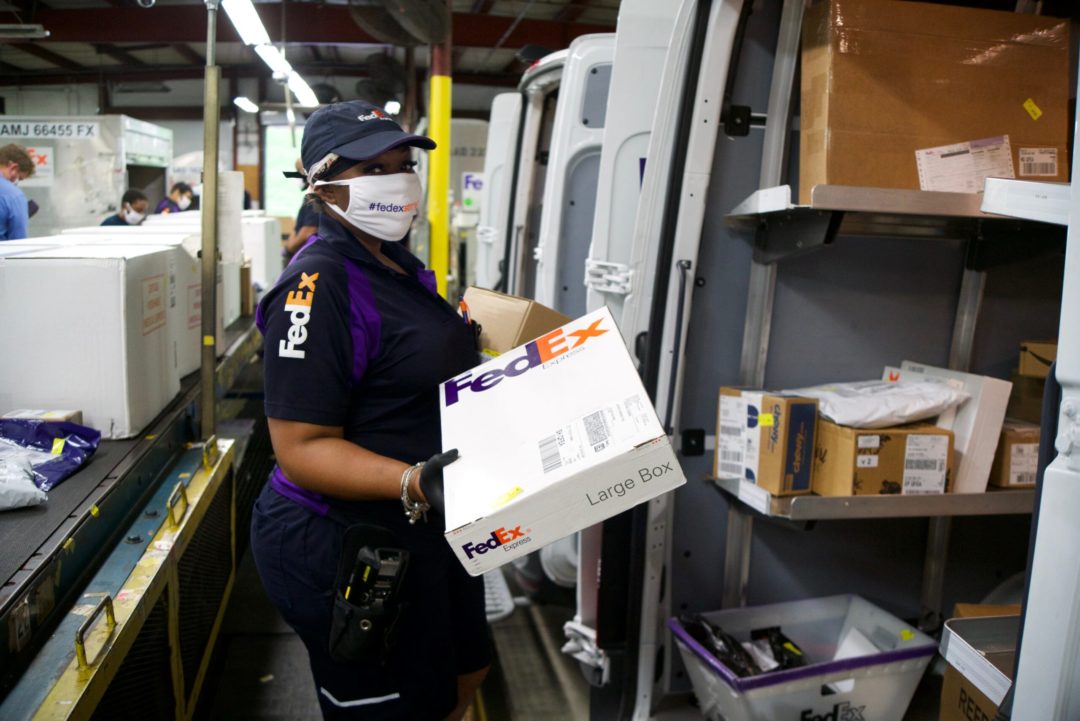FedEx extends Microsoft partnership to build “logistics as a service” product
Software giant will apply AI muscle to mine data from FedEx’ 17 million daily package volume.

As retailers, merchants, and brands continue to search for better ways to handle the relentless growth of e-commerce, the parcel carrier and logistics provider FedEx Corp. today launched a plan to answer that call through a collaboration with software giant Microsoft Corp.
Memphis, Tennessee-based FedEx will combine its package network intelligence with Redmond, Washington-based Microsoft’s Microsoft Dynamics 365 product, which includes enterprise resource planning (ERP) and customer relationship management (CRM) business applications. According to the partners, that mixture is a recipe for a cross-platform “logistics as a service” product that will improve commerce experiences for businesses so they can offer their consumers more integrated ways to shop, and support faster, more efficient deliveries.
More specifically, FedEx and Microsoft say they will apply artificial intelligence (AI) and machine learning (ML) tools to extrapolate insights from the 17 million packages that pass through the FedEx network each day. The benefits of that approach could include faster, more cost-effective delivery; near real-time delivery status communications; and convenient, frictionless returns with approximately 60,000 drop-off locations and printerless QR codes, the companies said.
The partnership expands an existing relationship between the two companies that had previously created the “FedEx Surround” product, a platform allowing business users to enhance visibility into supply chain details by leveraging data to provide near-real-time analytics into shipment tracking, which will drive more precise logistics and inventory management.
“More than ever, it’s clear just how critical having a resilient supply chain is for every organization's success in the modern economy,” Satya Nadella, chairman and CEO of Microsoft, said in a release. “We’re bringing data and insights from the FedEx network together with the Microsoft Cloud, starting with Dynamics 365, to help organizations accelerate their digital transformation across their business operations so they can offer customers more integrated ways to shop, and faster, more efficient deliveries.”
The partnership follows news last week that two other logistics powerhouses—JD.com and Shopify—had likewise teamed up to combine their capabilities in the name of supercharging the way their networks can serve e-commerce demand.
That initiative enlists different types of players, but it likewise shows the lengths that logistics providers will go to create more powerful fulfillment engines. Specifically, the deal will link Shopify’s millions of merchants worldwide with JD.com’s 550 million active customers in China. The result could give independent brands in the U.S. a simple, trusted way to access consumers in China, while simultaneously enabling Shopify merchants worldwide to access JD’s quality supplier network, the companies said.
“Bringing together two world-class commerce platforms—Shopify and JD.com—is a major step in solving cross-border commerce for merchants,” Aaron Brown, vice president of Shopify, said in a release. “The future of commerce is commerce everywhere—and that starts by removing barriers to entry to one of the most important e-commerce markets in the world.”
Related Articles
Copyright ©2024. All Rights ReservedDesign, CMS, Hosting & Web Development :: ePublishing